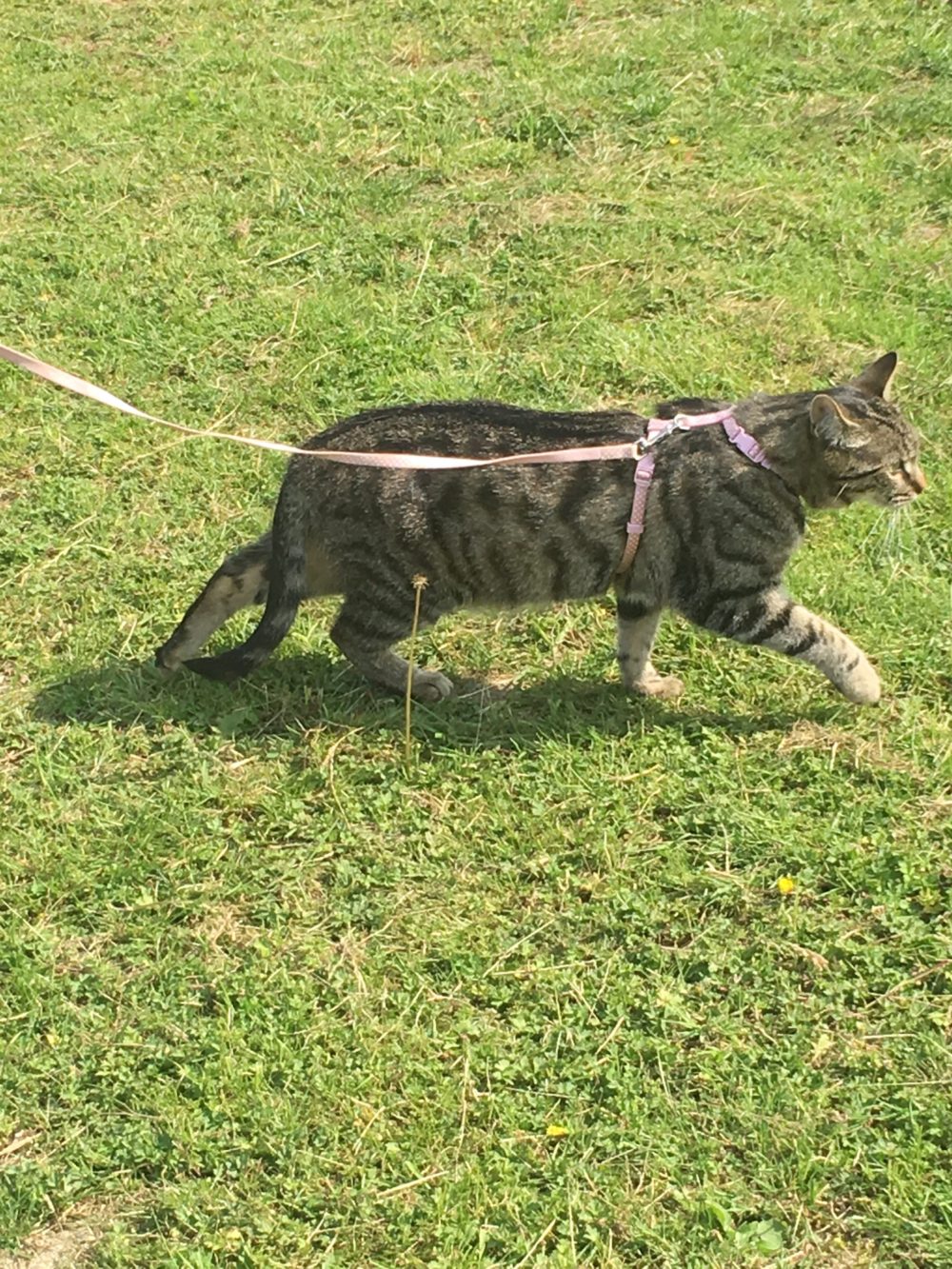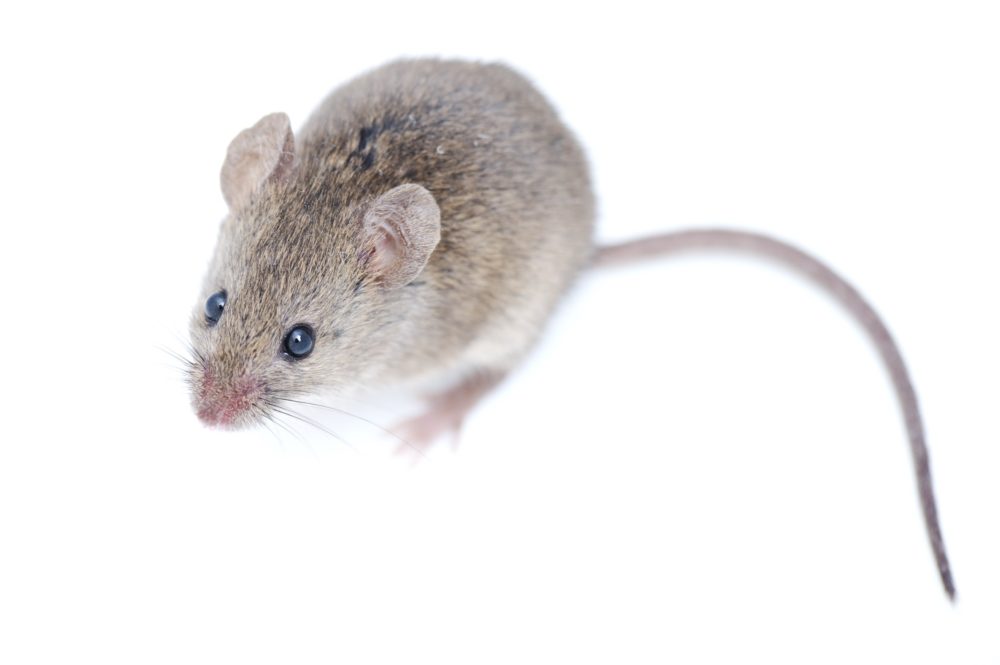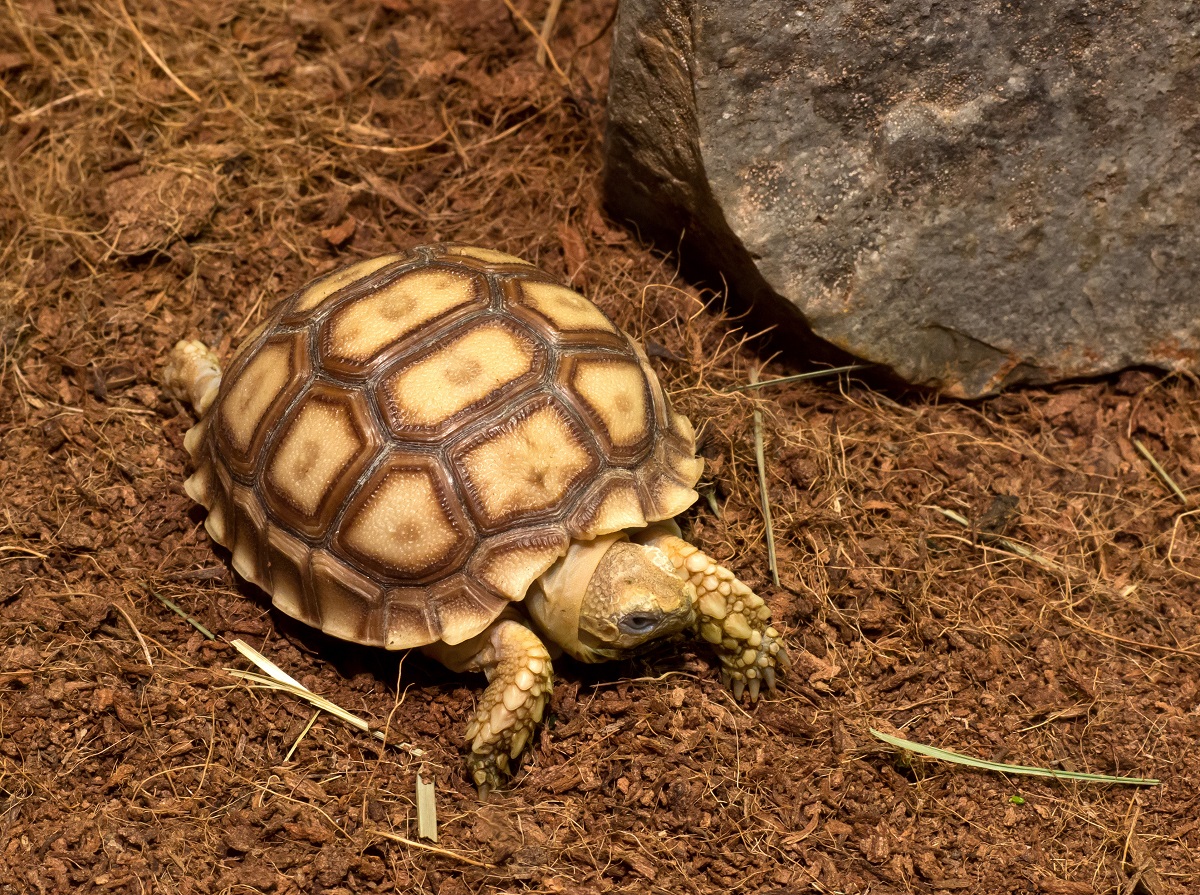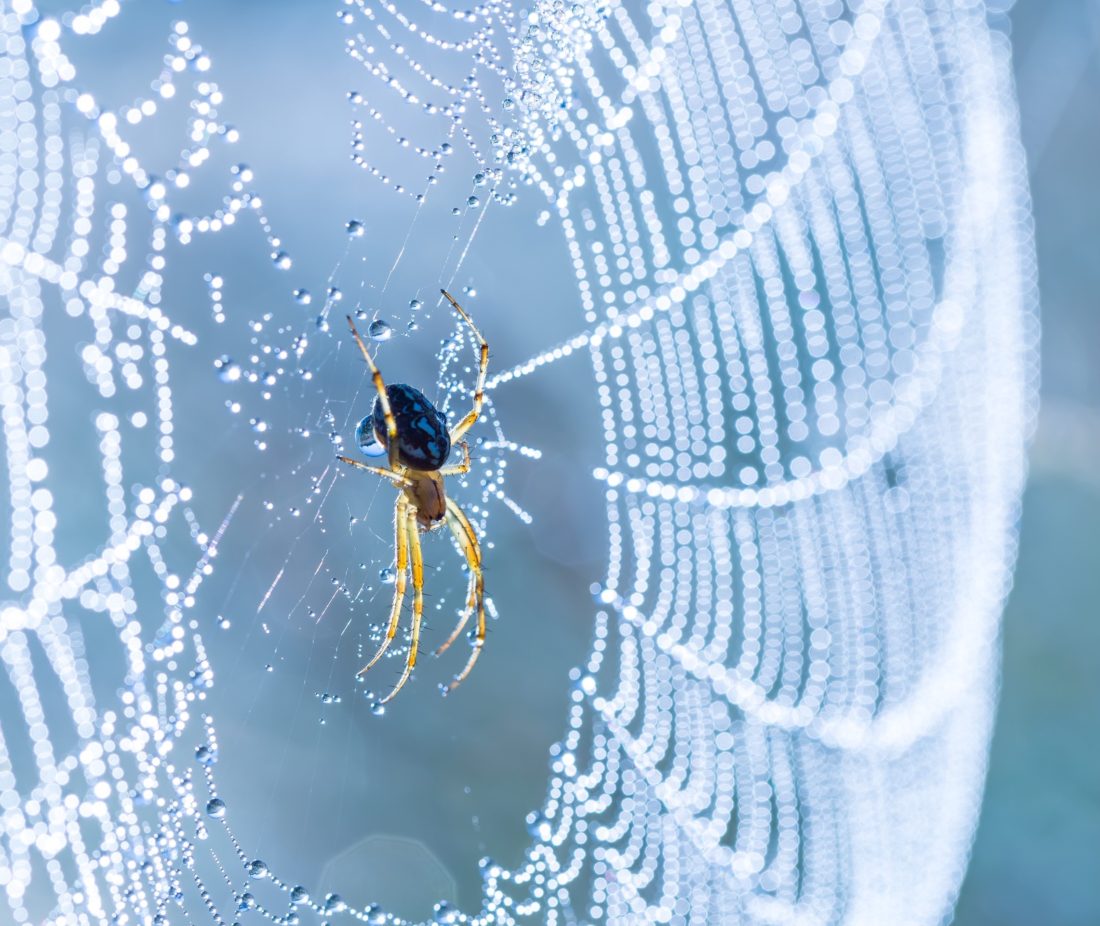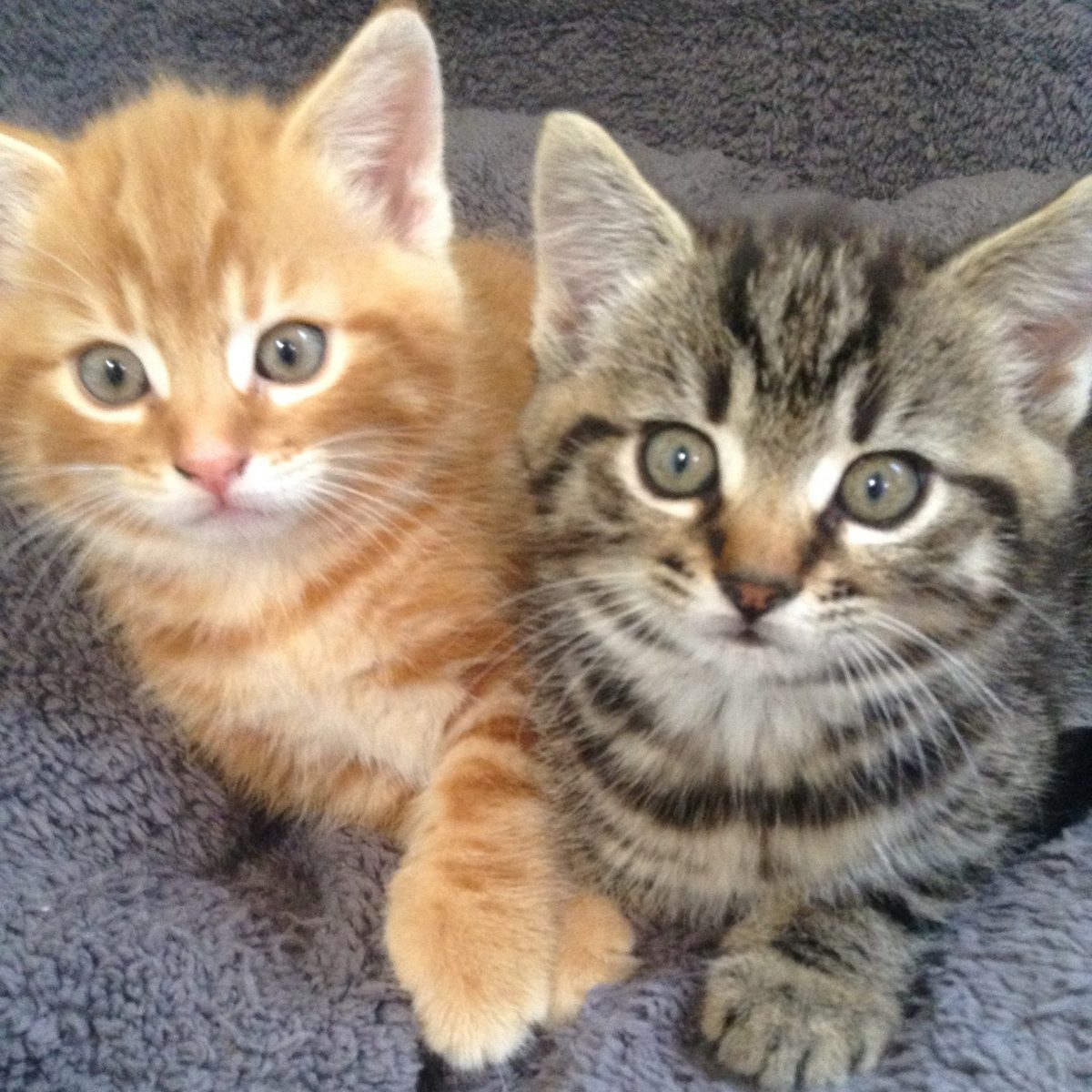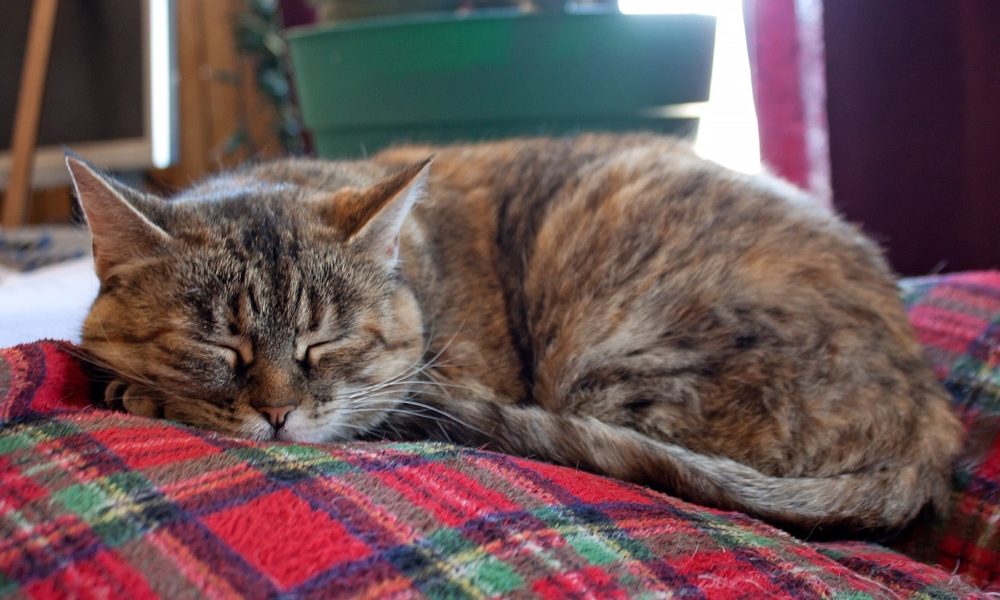
Where should my cat sleep? Where do cats sleep outside?
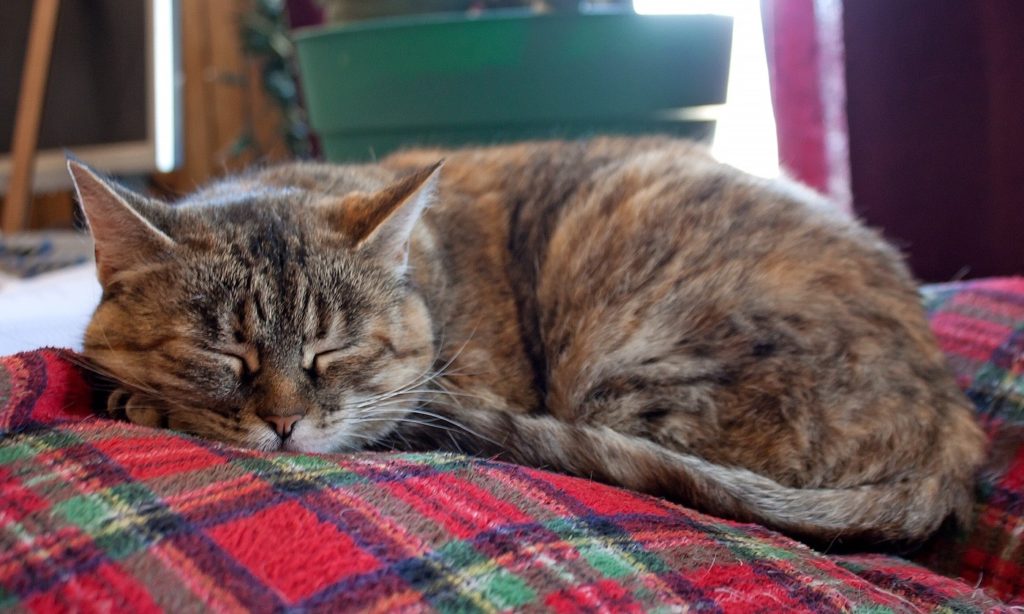 We all appreciate a good night’s sleep. Everything feels and works so much better after a peaceful night of good quality uninterrupted sleep. Which got us wondering. Do cats feel better after a good night sleep? Is the location and type of bed a factor that enhances the quality of their life? This article will explore the how and the why of ensuring the best sleep for cats.
We all appreciate a good night’s sleep. Everything feels and works so much better after a peaceful night of good quality uninterrupted sleep. Which got us wondering. Do cats feel better after a good night sleep? Is the location and type of bed a factor that enhances the quality of their life? This article will explore the how and the why of ensuring the best sleep for cats.
Where should my cat sleep?
There are several factors to consider when deciding where is best suited for your cat’s dedicated sleeping area;
Somewhere Warm
The position of their bed, or indeed any of their resting places, needs to be away from draught and in a nice warm area of the house. Cats love to be warm, their ideal temperature is between 29 to 38 degrees Celsius. Extra warmth can be provided by placing some soft bedding in their bed.
Safety
Cats feel safer when they are high up. It gives them the security than they can see or sense any oncoming threats or dangers.
Peace and privacy
We all like peace and quiet and a little privacy when having a nap or sleeping in our beds, and it’s no different for our cats. Place their bed in a quiet location, away from the hustle and bustle of daily life.
Away from the litter tray
If possible, it’s best not to place your cat’s bed near the litter tray. Some cats will also prefer not to have their bed to close to their food or water source either.
Offer a choice of sleeping places
Given that a cat sleeps for a large proportion of the day it is important to give your cat a choice of suitable areas for sleeping. And for each option the above criteria of comfort, warmth, privacy and safety should be kept in mind. The importance of choice is especially important in a household with more than one cat.
Should cats share a bed with humans?
This is a topic that splits opinions. Some cat owners gladly share their beds with their feline friends whilst for others it’s a big no. Sharing a bed with you won’t harm your cat, they will certainly feel warm and safe being so close to you. We’ve explored the benefits to our health of cat purring, and stroking our cat, in our article ’30 fabulous reasons to own a cat’ and co-sleeping with your cat can enhance these benefits.
However, sharing a bed with your cat may not be the best option if you suffer with an allergy triggered by your cat. Also, many cats tend to be more active and playful at night, this may disrupt your sleep pattern. Extra care needs to be taken too if you discover your cat has fleas or ringworm.
This decision is certainly a personal one, for you to decide what’s best for you and your cat.
Best type of beds for cats
 The range of cat beds available on the market is vast! Every imaginable size, color, style and price range. Unfortunately, there are no guarantees that what seems like the perfect bed in your eyes may simply not be to your cat’s liking. Do not be surprised that they take quite a fancy to the box that it came in! A cardboard box lined with a fleecy blanket can simply tick all the boxes for some cats. They feel safe and snug with the high side yet able to view any dangers with a simple raising of their head, and a warm blanket just completes the requirements of warmth. And indeed, this is one of the sleeping options that you can offer your cat. However, as noted earlier, providing a selection of napping places is best and therefore we can therefore indulge our desire of spoiling our cats to a fabulous selection of beds and napping spots.
The range of cat beds available on the market is vast! Every imaginable size, color, style and price range. Unfortunately, there are no guarantees that what seems like the perfect bed in your eyes may simply not be to your cat’s liking. Do not be surprised that they take quite a fancy to the box that it came in! A cardboard box lined with a fleecy blanket can simply tick all the boxes for some cats. They feel safe and snug with the high side yet able to view any dangers with a simple raising of their head, and a warm blanket just completes the requirements of warmth. And indeed, this is one of the sleeping options that you can offer your cat. However, as noted earlier, providing a selection of napping places is best and therefore we can therefore indulge our desire of spoiling our cats to a fabulous selection of beds and napping spots.
The most popular styles of cat beds include:
Radiator Hammocks
Not many kitties will be able to resist one of these. Provided your cat can access a radiator hammock, this style of bed ticks all the boxes especially cats who love a warm place to sleep.
Heated beds
A heated bed will be welcomed by most cats and can be particularly helpful for older cats as they begin to feel the cold more as old age creeps up. The choice of heated cat beds is endless. Some have removable heating units. Temperatures can be pre-set on most to suit the needs of your cat or the location of the bed. When choosing a heated bed ensure it has all the necessary safety and electrical testing certification.
Cat trees
The cat tree is a wonderful piece of furniture and can provide a great place to nap and be a great viewing point to watch the world go by. Some have toys attached and some also include a scratching area. They can range from being a simple one-tier cat tree to a large multi-tiered tree.
Cup style beds
These cat beds are simply a mini circular bed covered in a soft, snug fabric. Some come with hoods, others open. They are inexpensive, really appeal to cats and are easily moved from one place to another if needed and easily washable.
Window perches
This is simply a perch that can be attached to your windowsill. Some cats love to nap whilst benefiting from the warm sun coming in through the window. It is also a fabulous viewing area for an indoor cat to view the comings and goings of the outdoor world. A bird feeder located outside the window can keep a cat with viewing entertainment all day!
Sleeping pads
These are simply cushioned pads to be placed on a sofa, chair or even in a box, a comfortable base for your cat to rest and sleep. Heated pads are also available if additional warmth is needed. They are usually easy to wash and keep clean.
Cat furniture
From sofas and chairs, hammocks, igloos and sun loungers, to bunk beds, there are furniture items available to suit all cats! From small snug mini cat caves to a complete indoor cat house, our dear cats can have everything they could possibly wish for. They are certainly not essential items to the health and wellbeing of your cat but sometimes (and especially at Christmas and birthdays!) many of us choose to indulge and treat our cats with what we believe will make them that little bit extra comfortable.
This list is by no means exhaustive, or essential. Cats will soon make it very clear what they like or don’t like. The key points are ensuring your cat has a choice of dedicated areas for sleeping which are safe, quiet, warm and comfortable.
Sleeping patterns of cats
Cats love to sleep! On average a cat will sleep for 15 hours a day, with some sleeping as much as 20 hours a day! All this sleep is to conserve energy for hunting and catching prey. Although the domestic cat no longer needs to worry where breakfast will come from, the natural predator instincts still dominates the processes and bodily functions of the domestic cat. And as hunting usually works best between dusk and dawn, this is usually the time when your cat will be most alert and ready for action.
Cats have two types of sleep – a light doze or a deep sleep. When a cat is dozing, he can wake up in an instant, ready to spring into action. Their sleeping position will usually illustrate this alertness, be it twitching ears or tense body posture. Most cats doze for around 15 to 30 minutes, then fall into deep sleep for about 5 minutes then return to the lighter sleep of dozing.
There are factors that will affect the amount and time of a cat’s sleeping pattern. These factors include the weather, the age of the cat, whether they are an indoor or outdoor cat, general health and wellness, the breed of cat and of course, the cat’s character!
Domestic cats, like dogs, do however have the ability to adapt their daily schedules to suit their environment. It is quite likely, although not guaranteed, that your cat will adapt to being more playful when you are around and rest while you and the household are also resting and sleeping.
Tips to ensure a good night’s sleep for your cat
Once you have established where your cat’s bed will be and set up a bed that suits your cat, there are a few additional key points to help your cat to have a good sleep. These include;
- Ensure your cat has plenty of stimulation and playtime. Time spent playing with your cat is just as important as feeding and keeping them safe and warm. Playtime uses up stored energy and helps to relieve anxiety, stress, and behavioural problems. Check out our article ’18 games to play with your cat’ which explains in detail the importance of play and some great ideas for you to try. They will certainly sleep better after plenty of play.
- Cats are creatures of habit therefore once their sleeping places have been established and they are settled there, try not to relocate unless it is necessary.
- Feeding your cat with a healthy balanced diet will ensure she has all the necessary nutrients to keep healthy. A healthy active cat will then be better equipped for good quality restful sleep.
- Cats sleep better with a belly full of food. Ensuring your cat has a good evening meal should aid a good night’s sleep.
If you suspect or notice any unusual sleep patterns or have any concerns regarding your cat’s sleep, please contact your veterinary for advice and health check.
Where do cats sleep outside?
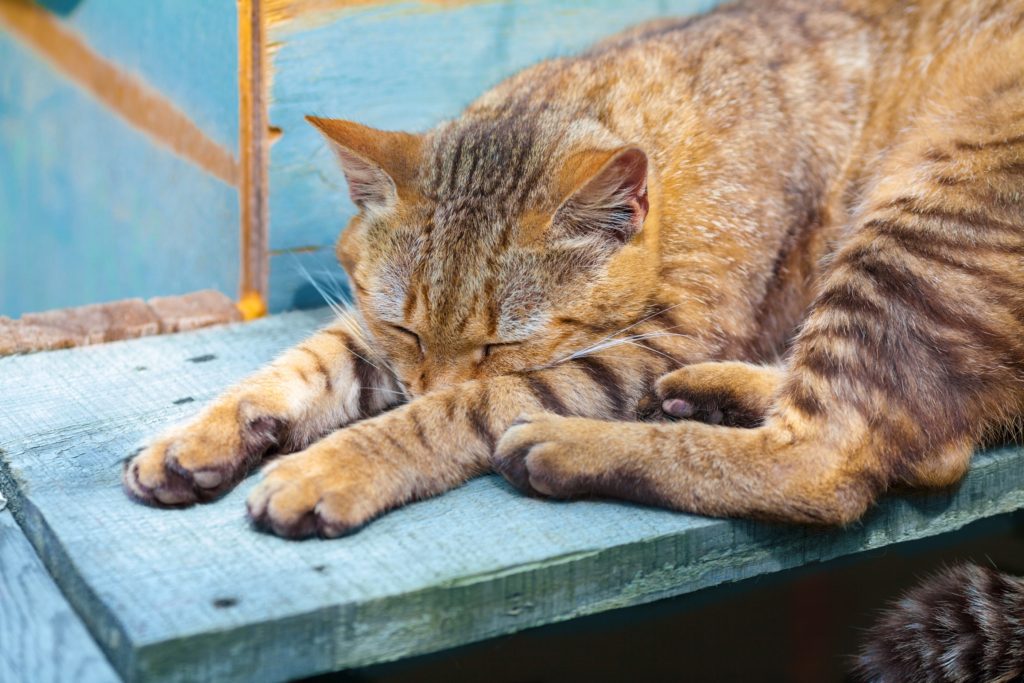
One of our cats, Misty, goes outside during the day and sleeps in the safety of the indoors at night. You may like our article ‘Should I let my cat outside at night’ to read more about this. Despite having a range of very comfortable sleeping areas indoors she still has naps during the daytime in the outdoors. Some favorite spots include snuggling amongst the hay bales in the shed, on an old armchair in the outbuilding and on a high shelf in the garage. The common factor seems to be an area where she feels safe, sheltered and familiar.
Sleeping considerations for a senior cat
A cat is officially classed as a ‘senior’ at the age of 10, but with good health, a little extra care, and attention, your cat could live until 18, 19, even into her early 20’s. Although there is no need to be alarmed that your beloved cat is reaching old age it is a good idea to be aware of what can be done to ensure that the senior years are as comfortable as possible. Many older cats will sleep more although for some ageing cats will become more wakeful at night. To ensure quality sleep for your elderly cat there are a few key points to note:
- As cats get older, they feel the cold more therefore ensure there are plenty of warm, snug, comfortably places available for them to rest and sleep. Use soft blankets, an old sweater, pillows or cushions for added warmth and comfort. Ageing joint and bones will benefit from restful naps and sleeps.
- Access to their usual sleeping areas may become more difficult as they may have difficulty getting to higher places as climbing or jumping becomes challenging. Ramps, carpeted steps or access via a steady box or stool can aid easier access to sleeping spots.
- As time passes, the usual sleeping spots may simply become too difficult to access and moving the bed or the napping spots to ground level may be required. If it is not possible to move the actual bed that your cat uses, place a blanket or toy already used in the old bed to the new bed to help make your cat feel safe and be surrounded by familiar smells and textures.
If you have a senior cat, check out our article ’16 Top Tips to ensure the senior years are comfortable for your old cat’.
Other articles you may find of interest:
How to keep your cat happy – 10 key factors
